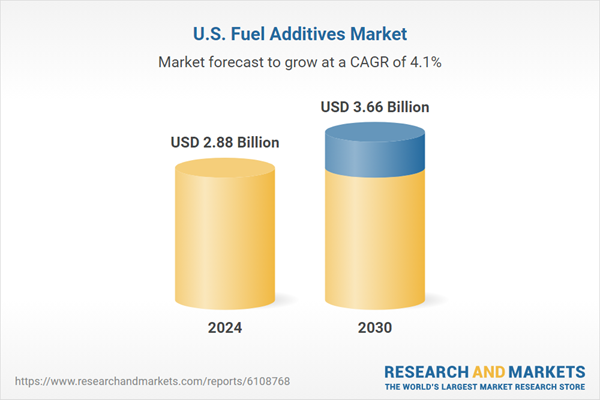Speak directly to the analyst to clarify any post sales queries you may have.
10% Free customizationThis report comes with 10% free customization, enabling you to add data that meets your specific business needs.
Key Market Drivers
Stringent Environmental Regulations and Emission Norms
The enforcement of strict environmental policies aimed at curbing greenhouse gas emissions and pollutants is a major driving force in the United States fuel additives market. Agencies like the Environmental Protection Agency (EPA) have mandated standards such as the Clean Air Act and Renewable Fuel Standard (RFS), which promote cleaner combustion through the use of specific fuel additives. The EPA’s 2025 RFS target of 22.33 billion Renewable Identification Numbers (RINs) supports higher biofuel blending, boosting the need for additives that improve the performance and compatibility of ethanol and biodiesel blends.As a result, manufacturers are increasingly incorporating additives like detergents, deposit control agents, and corrosion inhibitors to enhance fuel efficiency and reduce emissions. The drive for lowering the transportation sector’s carbon footprint, particularly in commercial and public transit fleets, continues to encourage the adoption of emission-reducing fuel additives. This trend is expected to sustain demand for advanced additive technologies in the years ahead.
Key Market Challenges
Fluctuating Raw Material Prices and Supply Chain Disruptions
Volatility in raw material costs and persistent supply chain issues present significant challenges for the U.S. fuel additives market. Additives are composed of multiple chemical ingredients - such as antioxidants, metal deactivators, and surfactants - often sourced from petrochemical feedstocks. These inputs are subject to price fluctuations linked to global crude oil dynamics, geopolitical instability, and OPEC+ production policies. Such unpredictability affects manufacturing margins and may lead to increased prices for end users, limiting demand. Additionally, global disruptions like the COVID-19 pandemic and international conflicts have exposed weaknesses in supply chains, resulting in procurement delays and distribution setbacks. To counteract these effects, manufacturers are investing in localized production, optimizing inventory, and diversifying their sourcing, all of which add operational complexity and financial strain.Key Market Trends
Rise in Demand for Low-Emission and Cleaner Additive Solutions
The U.S. fuel additives market is seeing a notable shift toward low-emission and environmentally friendly additive solutions. In response to growing ecological awareness and tighter federal and state emission standards, manufacturers are innovating with formulations that promote cleaner combustion. Additives like deposit control agents, detergents, and combustion improvers are being redesigned to lower emissions while maintaining engine efficiency. A 2025 study reports an increasing preference for E15 and E85 ethanol fuel blends, fueled by RINs and tax incentives under the Inflation Reduction Act (IRA). These higher ethanol-content fuels, with up to 40% lower carbon intensity than traditional gasoline, are accelerating the demand for specialized additives that support engine performance and fuel stability.Key Market Players
- Afton Chemical Corporation
- The Lubrizol Corporation
- Innospec Inc.
- BASF SE
- Exxon Mobil Corporation
- Cummins Inc.
- Chevron Oronite SA
- Infineum International Limited, Chemtura Corporation
- LyondellBasell Industries NV
- Archer Daniels Midland Company
Report Scope:
In this report, the United States Fuel Additives Market has been segmented into the following categories, in addition to the industry trends which have also been detailed below:United States Fuel Additives Market, By Type:
- Stability Improvers
- Anti-Icing Fuel Additives
- Octane Improvers
- Others
United States Fuel Additives Market, By Application:
- Diesel Fuel Additives
- Gasoline Fuel Additives
- Others
United States Fuel Additives Market, By Region:
- South
- West
- Northeast
- Midwest
Competitive Landscape
Company Profiles: Detailed analysis of the major companies present in the United States Fuel Additives Market.Available Customizations:
With the given market data, the publisher offers customizations according to a company's specific needs. The following customization options are available for the report.Company Information
- Detailed analysis and profiling of additional market players (up to five).
This product will be delivered within 1-3 business days.
Table of Contents
Companies Mentioned
- Afton Chemical Corporation
- The Lubrizol Corporation
- Innospec Inc.
- BASF SE
- Exxon Mobil Corporation
- Cummins Inc.
- Chevron Oronite SA
- Infineum International Limited, Chemtura Corporation
- LyondellBasell Industries NV
- Archer Daniels Midland Company
Table Information
| Report Attribute | Details |
|---|---|
| No. of Pages | 70 |
| Published | July 2025 |
| Forecast Period | 2024 - 2030 |
| Estimated Market Value ( USD | $ 2.88 Billion |
| Forecasted Market Value ( USD | $ 3.66 Billion |
| Compound Annual Growth Rate | 4.1% |
| Regions Covered | United States |
| No. of Companies Mentioned | 10 |









